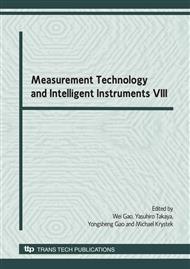p.525
p.529
p.533
p.537
p.543
p.547
p.549
p.553
p.557
ESAD Shearing Deflectometry: A Primary Flatness Standard with Sub-Nanometer Uncertainty
Abstract:
To overcome the limitations of conventional interferometry, a technique has been developed which allows the absolute topography measurement of near-plane and slightly curved optical surfaces of arbitrary size with low measurement uncertainty. The Extended Shear Angle Difference (ESAD) method combines deflectometric and shearing techniques in a unique way to minimize measurement errors and to optimize measurand traceability. A device for the topography measurement of optical surfaces up to 500 mm in diameter, achieving sub-nanometer repeatability, reproducibility and uncertainty, was built at the Physikalisch-Technische Bundesanstalt (PTB). The ESAD method is optimally suited for creating a primary standard for straightness and flatness with highest accuracy by which the three-flat test or liquid mirrors can be replaced as starting points of the traceability chain in flatness measurement. In the following, the improved ESAD device which uses optimized opto-mechanical components is presented. Central aspects of the proper design and use of deflectometric systems are highlighted, including the optimal use of pentaprisms.
Info:
Periodical:
Pages:
543-546
Citation:
Online since:
June 2008
Authors:
Price:
Сopyright:
© 2008 Trans Tech Publications Ltd. All Rights Reserved
Share:
Citation:


